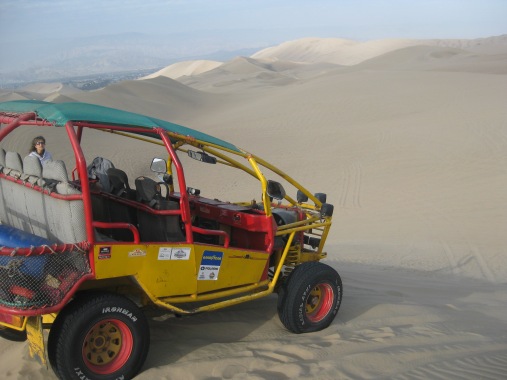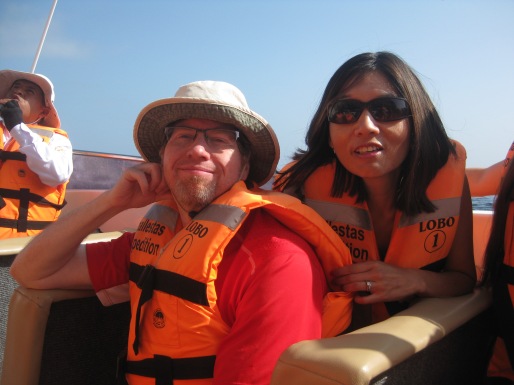Islas Ballestas, Paracas, Peru
*BecauseItzThere is primarily a hiking blog, but from time to time we do feature other types of outdoor adventures, including ‘nautical hijinx.’ The following nautical hijink occurred in 2015 as part of the same trip that included the Santa Cruz Trek. We hope you enjoy it!

There is more to do in Peru besides hiking. After returning from the Santa Cruz Trek in 2015 Sylvia’s family wanted to show me some examples of Peru’s stunning Pacific Coastline. We set off for the town of Paracas, about three hours south of Lima, for a tour of the Islas Ballestas (In English, the Crossbow Islands.)
The Islas Ballestas are part of the Paracas National Reservation, a coastal sanctuary for marine wildlife that is also a world Unesco Heritage site. Tours from Paracas leave continually and last about two hours…there’s generally no need to make reservations for these, just show up early and stand in line.
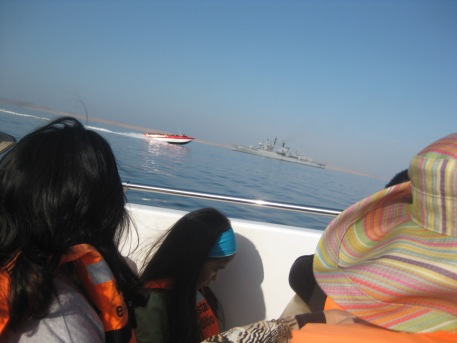
The tour boats themselves are very fast boats that skip along the water, and once they get in the vicinity of the rocks and cliffs, they approach VERY closely. There’s certainly no likelihood of dying of boredom on the tour.
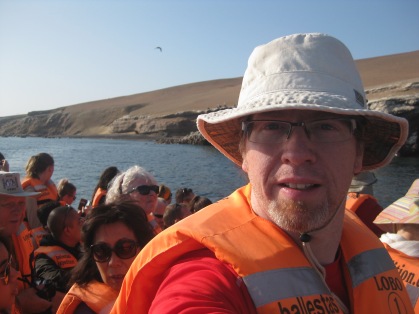
One of the first sites the boats all pass is this somewhat famous formation known as the Candelabra, nearly 600 feet tall and visible for 12 miles out to sea. The formation recalls the even more famous Nazca Lines to the south. The formation has been dated to 200 BC, which makes it not only far older than the Spanish Conquest, but far older than the Inca civilization as well.
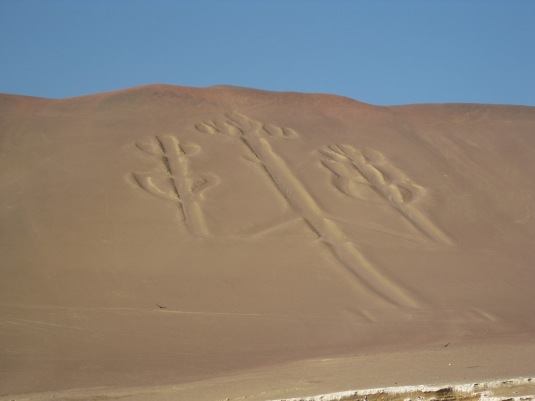
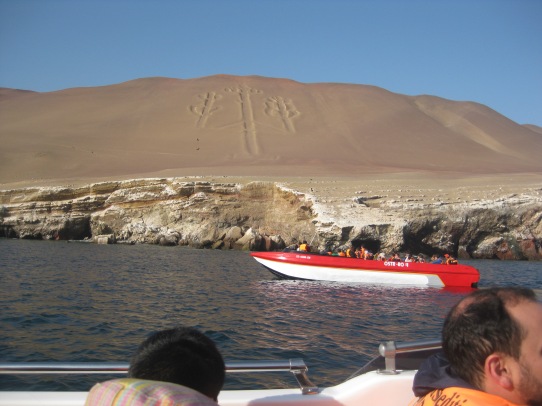
If you like cliffs, rock formations and crashing surf, you are going to love the Islas Ballestas. The rugged, craggy coastline is as impressive as anything I have seen in Northern California, Oregon, Washington or Maine.
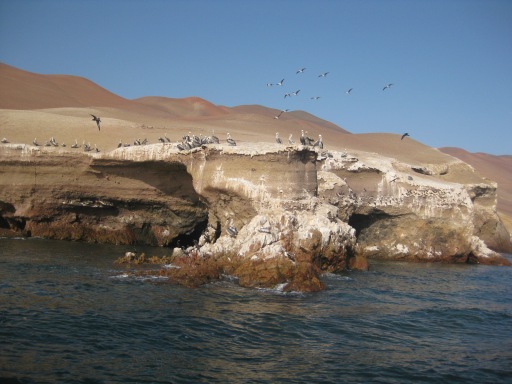
The reserve is the home of the endangered Humbolt Penguin, one of the most Northerly ranging penguin species. In fact, THOUSANDS of birds make these cliffs their home. So many that bird guano is harvested on some of the islands for industrial purposes. Some of the islands are so covered with nesting birds that the colonies can be seen from miles away as discolorations on the land.
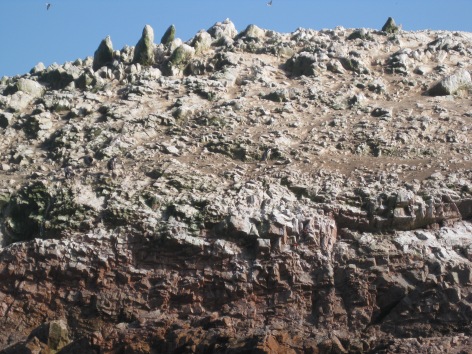
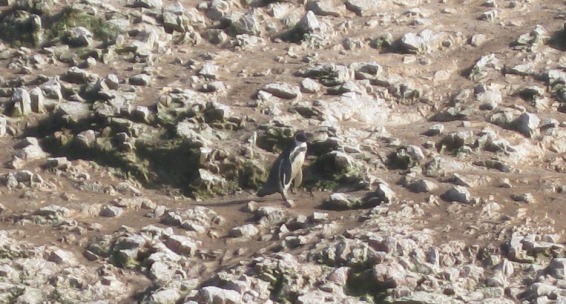
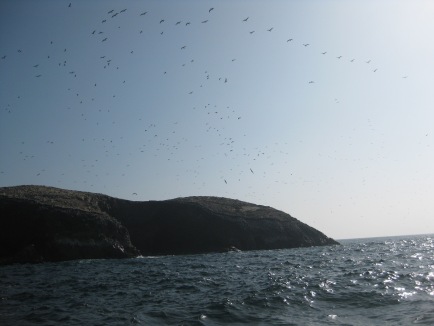
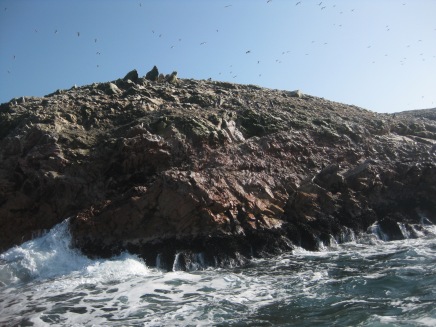
Also living here are large colonies of sea lions. In some seasons you can observe thousands of them here. But this was not the breeding season, and so we saw only a few mostly sleepy stragglers, sometimes sleeping on rocks high above the waves. The Sea Lions were for the most part quite cooperative in efforts to photograph them, and even seemed at times to be hamming for the lens.
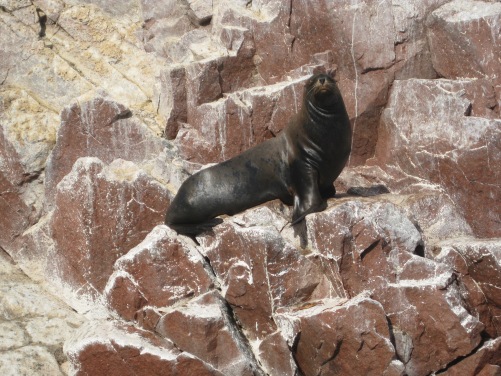
The large birds on the clifftops are mostly pelicans and Blue Footed Boobies, which also nest on the Gallapagos Islands.
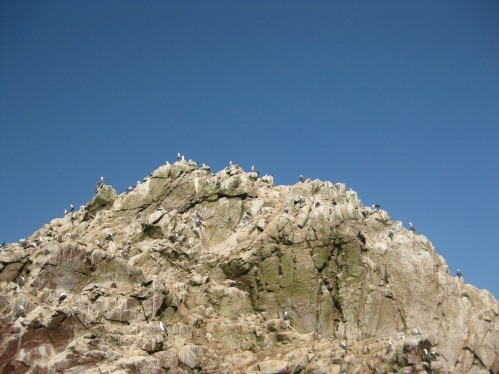
As stated the tour boat skippers delight in getting as close to the crashing surf beneath these cliffs as possible. They’re pretty good at getting VERY close.
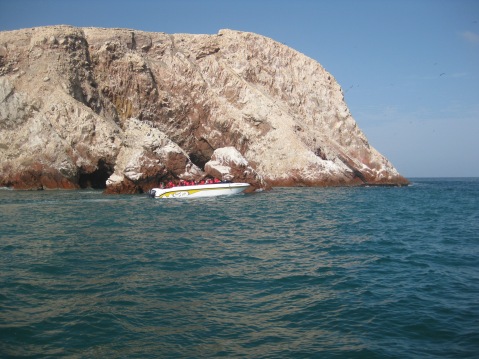
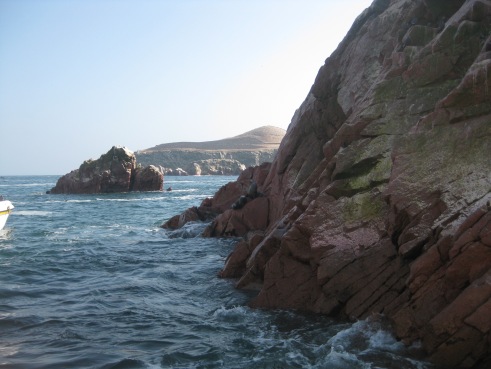
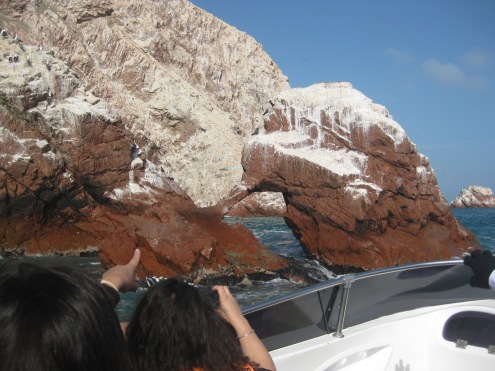
There are numerous bizarre rock formations here. Grottos, archways and strange, spikey pinnacles. The birds cover all of them. At one point the tour boats usually thread the eye of the needle and run one of these natural archways to delight (or terrify) the passengers.
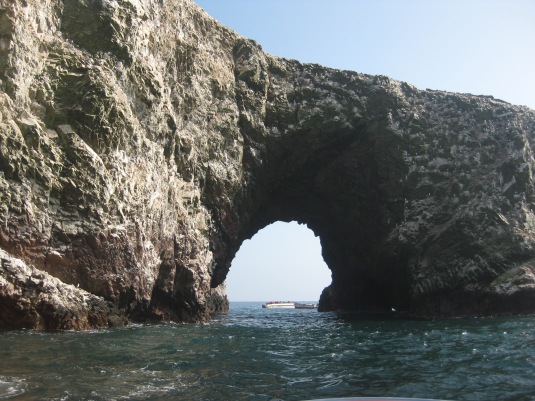
Because of the distance from Paracas and the powerful surf, it is NOT common to Kayak these waters. In fact, I am not sure it’s even allowed, so if you have the urge please check with the local park authorities. However, only a VERY skilled and experienced boater should even think of attempting these waters. These are NOT safe places.
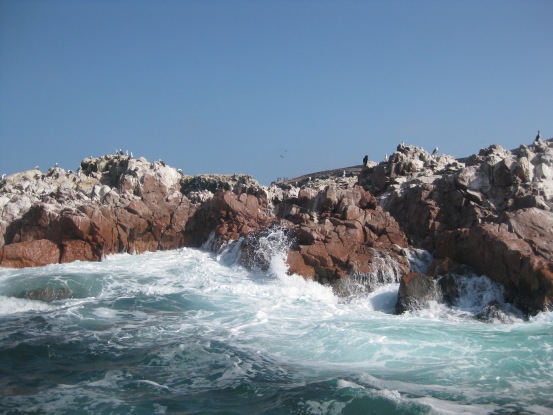

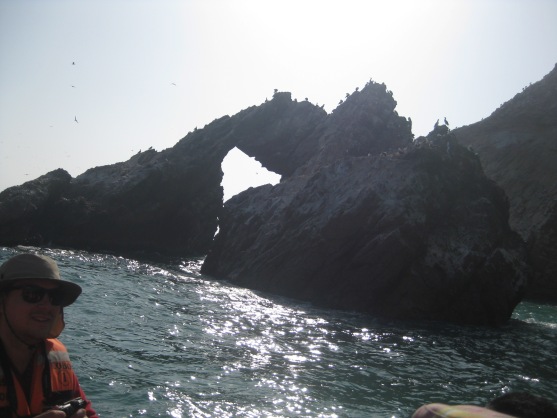
My advice is stick with the tour.
At the end of the tour we returned to Paracas to see the local fishing fleet unloading at the quay – a reminder that in addition to being a seaside tourist mecca, Paracas is also an important commercial port that sustains a vital fishing industry.
Paracas and the Islas Ballestas are a pretty easy drive just a few hours south of Lima down the very good Panamerica Sur Highway (which I found to be no more difficult to drive than any US highway, eclectic traffic patterns aside.) This site has some good links as to the tours themselves. If you are in Peru just to visit or do some hiking, it’s well worth the detour south.
You might also consider checking out the desert oasis of Huacachina outside the city of Ica for some dune buggy-ing. We did!
